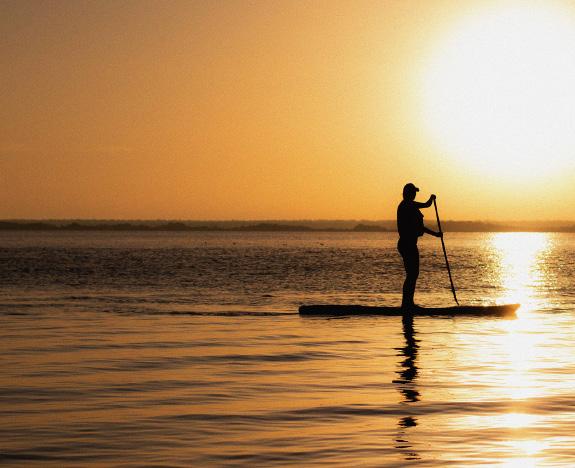
2 minute read
Stand Up Paddleboarding in St Francis Bay
EPISODE THREE BY MELISSA VOLKER
All pics courtesy of Expression On The Beach
Advertisement
BASIC SUP TECHNIQUE
You’ve chosen your board and you’re ready to head out onto the Kromme River or the canals. Here are a few technique tips to get you going.
1. Adopt a wide stance, with a foot on either side of the handle.
2. Bend your knees; not a deep squat, but a relaxed bend. Your bum should be in line with your heels.
3. Keep your head and eyes up. You go where you
look. If you look down, you’ll go down.
4. The most common beginner mistake is holding the paddle backward.
THE ANGLE OF THE PADDLE BLADE SHOULD FACE AWAY FROM YOU, FLARING TOWARD THE NOSE OF THE BOARD.
If it looks like it’s able to scoop water toward you, it’s the wrong way around.
5. Your top arm should be straight, with your hand over the top of the handle so you can apply downward pressure in the paddle stroke.
The length of the paddle should be roughly one shaka above your head. An adjustable paddle affords
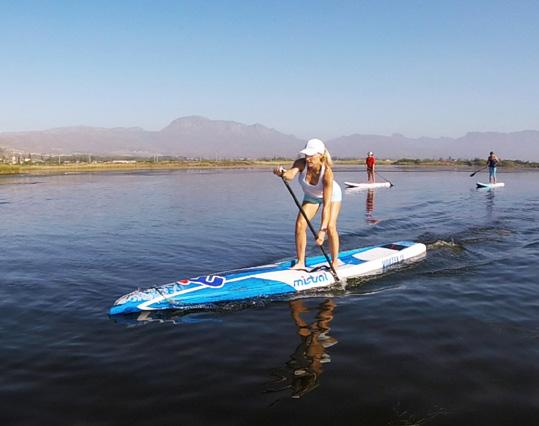
Lizanie Teron, bent knees, A frame, Blade of paddle.
rider height flexibility but can be heavy.
IF YOU PLAN TO BEAT YOUR LAP TIME AROUND THE CANALS ON YOUR FOURTEEN-FOOT SPEED MACHINE, A CARBON PADDLE IS A MUST.
You’ll have it cut to your required height and the handle reattached.
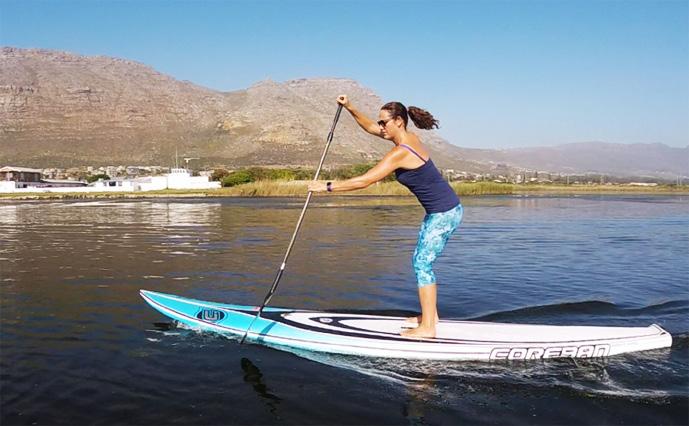
Gaby Nordgard, A Frame technique.
6. Your paddle should enter the water at 90 degrees. Apply downward pressure and pull your body toward the paddle.
7. THE PADDLE SHOULD NOT GO PAST YOUR FEET AFTER YOUR STROKE.
Paddling past your feet throws you off balance. When the blade lines up with your feet, lift the paddle from the water and reach forward, top arm straight, and replant the paddle in front.
8. YOUR ARMS AND PADDLE SHOULD LOOK LIKE A CAPITAL A WHEN YOU ARE READY TO DIG THE BLADE INTO THE WATER.
9. Reach your arms forward, plant the paddle in the water, pull yourself toward the paddle with your core. Repeat a few times, then change sides. It is similar riding in a bike, in that forward momentum keeps you from falling and increased cadence makes you go faster.
10. When you lift the paddle at the end of the stroke there should be no splashing or scooping of water.
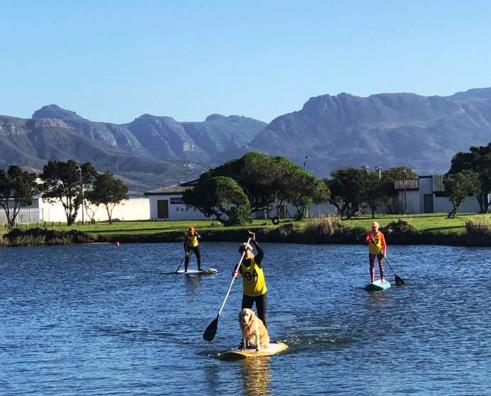
11. Although not motorized, SUPs have a reasonable responsibility to prevent collisions with boats and other craft. Give way to the starboard (right) side. Now you’re on the move, you might be ready to progress into the ocean. In our next episode will look at a few safety tips so you can SUP on both the river and the sea with confidence.
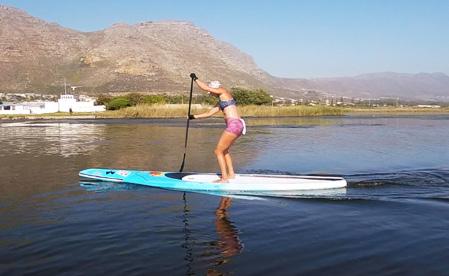
Evette Terblanche, A frame, knees bent.
Melissa Volker is a successful book writer and a keen SUPer. Find out more about her here:
https://missmelissawrites.com/






